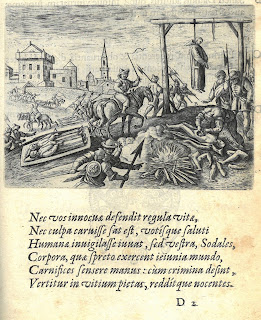While answering a reference question for a researcher who couldn't visit us in person, we had the good fortune to encounter this little gem hiding among the other and seemingly more respectable volumes on our shelves. Although the author's name is Leda Burke, this little book was actually the first published novel of author David Garnett, who went on to write dozens of books including the prize-winning
Lady Into Fox in 1922 and
Aspects of Love in 1955. Garnett was a late addition to the Bloomsbury Group, a collective of English writers, intellectuals, philosophers, and artists that were especially active during the first half of the 20th century. The set's list of impressive members included Virginia Woolf, John Maynard Keynes, and E. M. Forster, among others. Most of the male members of the group knew one another from their time in university; they either attended Trinity or King's College while at Cambridge, and a significant number of them were members of the Cambridge Apostles, an exclusive intellectual society that was originally founded in 1820 by a student who went on to become the Bishop of Gibraltar.

Garnett's entry point into the Bloomsbury Group was Duncan Grant, the cousin and sometime lover of Lytton Strachey, himself one of the founders of the Group. The two men met at a Christmas party hosted by Strachey in 1914; they soon became lovers and ran off to work a fruit farm together as conscientious objectors during World War One. In a scandalous but very Bloomsburian twist, Garnett would later go on to marry Grant's daughter Angelica, whose infant baptism he had attended as a young man of twenty-six. Angelica herself was a product of an affair between Grant and Vanessa Bell, the nominal wife of Bloomsbury artist Clive Bell and the sister of Virginia Woolf. Keeping track of it all tends to make one's head spin.

For the book lover among us, though, we have reason to appreciate Garnett for more than his skill with a pen. He also ran a bookshop with Francis Birrell, unsurprisingly named "Birrell & Garnett," near the British Museum on Gerrard Street. It was in the basement of the bookshop that Garnett and his friends Francis Meynell and Vera Mendel founded the Nonesuch Press. The Press's first book was a volume of John Donne's
Love Poems, printed in 1923. The Nonesuch Press was prolific for the next few decades and eventually came under the control of George Macy, founder and owner of the Limited Editions Club, before shuttering its windows for good in the 1960s.
Any blogpost that involves the Bloomsbury Group is liable to run on at length, given the myriad fascinating individuals who were a part of its heyday. We will restrain ourselves for now, but we encourage you to come in and and see our first edition of
Dope Darling, also known as
Val 827 G187 P5, which was given to us by the Friends of the Dartmouth Library. You can also look at our first edition of
Lady Into Fox, which is
Rare PR6013.A66 L3. To see the first Nonesuch Press printing of John Donne's
Love Poems, also here at Rauner, ask for
Presses N731do.
 The Reformation spurred a lot of books decrying the evils of Catholicism. Our collections are full of diatribes against Popish forces along with plenty of graphic illustrations of Protestant martyrs. The propaganda on both sides ran freely, but our collections seem to revel in the anti-Catholic. That's why we were pleased to pick up a counter reformation depiction of atrocities committed against Catholics--specifically focused on the plight of English Catholics as Great Britain flip-flopped between Protestant and Catholic power in the 16th century.
The Reformation spurred a lot of books decrying the evils of Catholicism. Our collections are full of diatribes against Popish forces along with plenty of graphic illustrations of Protestant martyrs. The propaganda on both sides ran freely, but our collections seem to revel in the anti-Catholic. That's why we were pleased to pick up a counter reformation depiction of atrocities committed against Catholics--specifically focused on the plight of English Catholics as Great Britain flip-flopped between Protestant and Catholic power in the 16th century.

